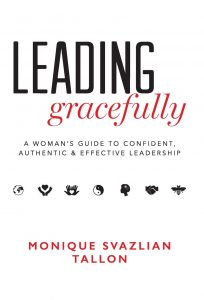4 Practical Ways to Build More Self-Confidence for Women in Leadership – Part II
Always remember you are braver than you believe, stronger than you seem, and smarter than you think. Christopher Robin
In my last post, we looked at the definition of self-confidence and why it’s so important for women looking to move forward in their careers. If you need more evidence of why confidence is imperative for women, we know that a lack of confidence in millennials can prevent them from entering the workforce. And since they are now the biggest segment of the workforce, it should be in everyone’s interest to ensure these issues are addressed in companies through women’s leadership training through offering leadership development, mentoring and coaching opportunities for up-and-coming female leaders.
In this post, we’ll introduce four practical ways you can begin working on how to gain confidence, build inner strength and be free of that pesky voice that tells you you’re never good enough!
1. Write down the words of your Inner Bully
Now it’s also important to know the primary job of our Inner Bully. The job of our Inner Bully is to keep us safe. It wants to protect us by reminding us of our past failures and limitations so we won’t repeat the same actions that have caused us pain and humiliation in the past. But although it thinks it’s keeping us safe, it’s unaware of the damage it’s doing in the process, especially to our self-confidence. It’s like the operating system on a computer – it runs in the background so you can’t see it but it runs the entire thing.
So how do we control the Inner Bully? We have to update our operating system.
The first step is to identify the voice of our Inner Bully. We are going to bring the Inner Bully into our conscious awareness so we can begin reshaping our beliefs into more positive ones.
Take a moment now to think about your Inner Bully – what does it say to you? What are the words it uses? What is the dialogue? What are those limiting beliefs?
Pick the main one, the one that is usually right there, and jot it down in your journal.
2. Get in touch with your Inner Cheerleader
Now that we have identified the words of our Inner Bully, the next step is to replace those words with the words of our Inner Cheerleader.
Our Inner Cheerleader is the part of us that knows that we are good enough, we are smart enough, capable enough. It is the part of ourselves that is confident. Think about your best friends. Every time you are sad or not feeling particularly confident, you will probably call a close friend or family member and they will remind you of how wonderful you are. And you would do the same in return. What we have to learn to do is to do that same thing for ourselves especially when we notice the Inner Bully becoming loud.
So we are going to get in touch with our Inner Cheerleader as the second step to learning how to boost self-confidence. This exercise is a favorite with women who attend my workshops and keynotes because it helps them immediately connect to their power and authenticity.
To do that, I’m going to ask you to close your eyes for a moment. Bring to mind a peak experience from your past – a moment or a time in your life where you accomplished something big where you felt like you were at the top of the mountain. Really visualize that moment in time and bring it into your mind’s eye.
Think about the qualities you showed up with to reach that moment. Who were you being? What did it take to get there? Think about the qualities that got you there, and who you had to be to get there. What words come to mind?
Open your eyes and write down the words that came to mind. What qualities did you exhibit to reach that moment? Write those down in your journal. Then turn those words into phrases or sentences. These phrases will begin to make up the dialogue of your Inner Cheerleader.
3. Replace the Inner Bully with the Inner Cheerleader
Every time you notice your Inner Bully voice, you’re going to replace it with the words of your Inner Cheerleader from Step #2. I recommend starting out by first:
- Keep a tally of every time you hear your Inner Bully getting loud.
- Notice how many times a day it speaks to you.
- In what situations or contexts does it tend to come up?
- Do this for at least one week.
In the second week, begin replacing the words of your Inner Bully with phrases you came up with from your Inner Cheerleader. You’re going to use this confidence building activity by practicing self-compassion and kindness with yourself. You’re going to talk to yourself like you talk to your best friend and it’s going to help you remember how amazing you truly are.
4. Practice Makes Perfect
As you continue to replace the words of your Inner Bully with the words of your Inner Cheerleader you’ll begin to notice the volume of your Inner Bully go down and you’ll be able to turn up the volume of your Inner Cheerleader. Over time the voice of your Inner Cheerleader will become a part of your inner Operating System. But in order for this to become truly a habit, you will need to practice to get good at noticing each time your Inner Bully rears its ugly head!
If you want further exercises to help you practice, check out the additional exercises I’ve developed featured in my book Leading Gracefully.
With realization of one’s own potential and self-confidence in one’s ability, one can build a better world. Dalai Lama
What Results Can You Expect?
I usually recommend at least three to six months to begin noting a shift in your inner dialogue. Be patient and realize that it’s taken you a lifetime to develop an Inner Bully, so it will take some time to undo that programming. But if you approach these exercises with the same dedication and discipline required to lose weight, learn a new language, or develop any habit, you’ll begin to see changes over time. The goal is to eventually turn down the volume on your Inner Bully and turn up the volume on feeling more self-confident, have more self-esteem, and more inner trust.
As you complete these exercises:
- What do you notice?
- Does your Inner Bully become less loud?
- Are you feeling more confident?
Leave your comments in the feed below and share how these tools worked for you!










